|
Muong is a social unit comprised of villages located in an entire mountain valley or some adjacent valleys. A muong is ruled by a landlord family called a Lang family. |
Nha Lang is the headquarters of a muong where all of the muong’s affairs are settled. Nha Lang symbolizes the power of Lang (landlord) as well as the prosperity of the muong, according to researcher Bui Huy Vong.
Nha Lang is located in the best position at the center of a muong. It represents the power of the muong, so no one in the muong is allowed to build their home larger than the Nha Lang.
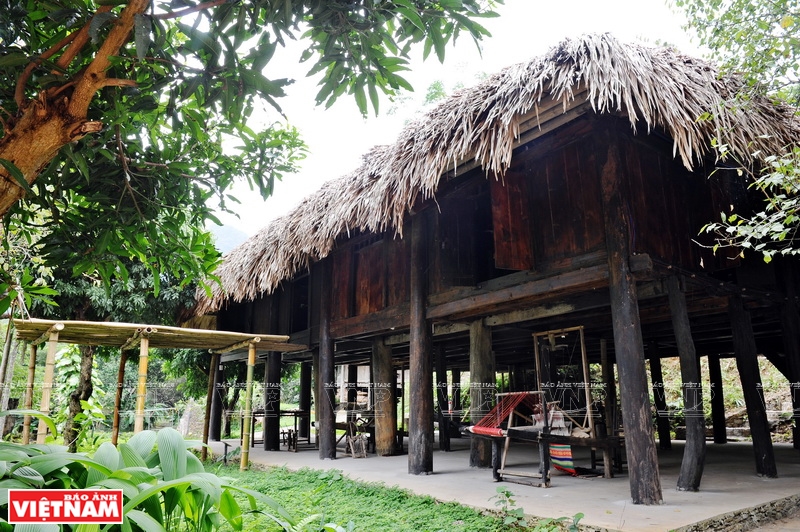
Nha Lang is the center of power in a Muong society.
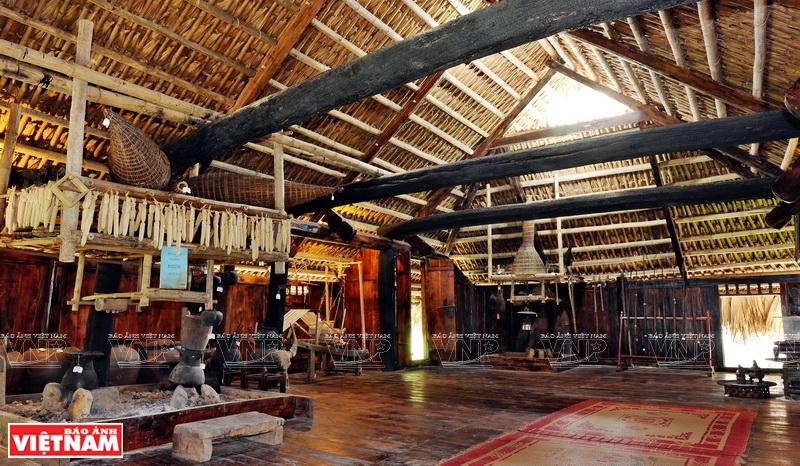
Inside the main part of a Nha Lang.
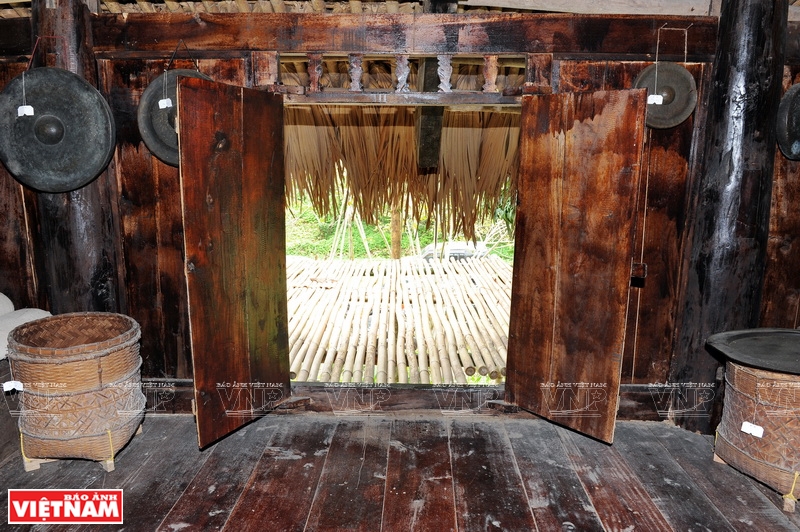
The main entrance door of a Nha Lang. In front is a khap, a bamboo floor for drying rice, maize, and clothing.
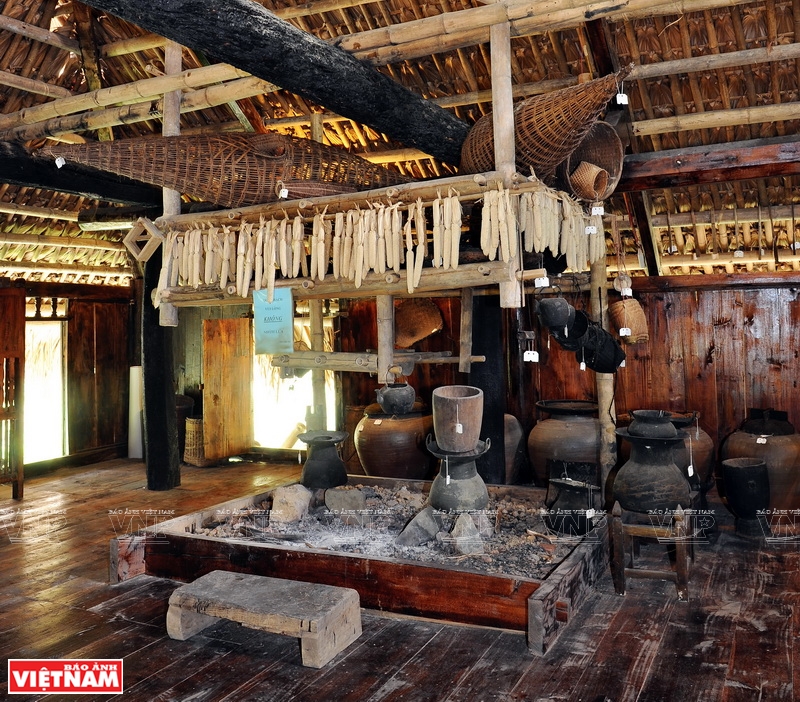
The big stove for cooking in a Lang’s family.
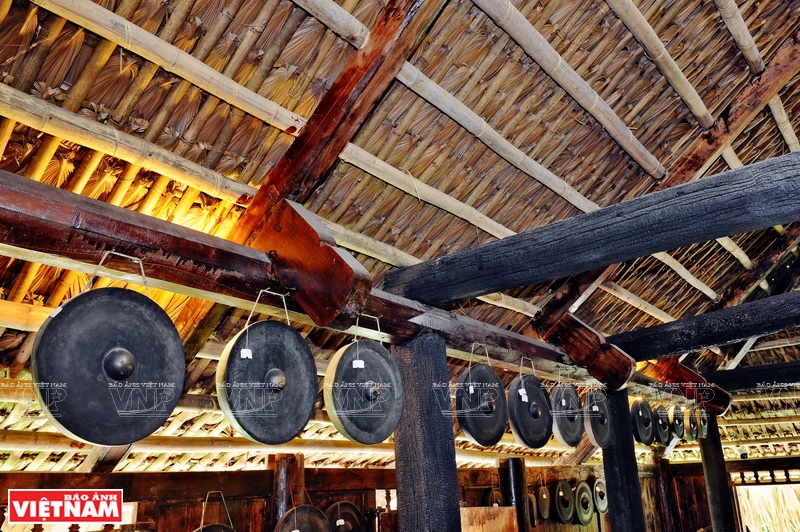
Gongs are displayed to decorate a Nha Lang.
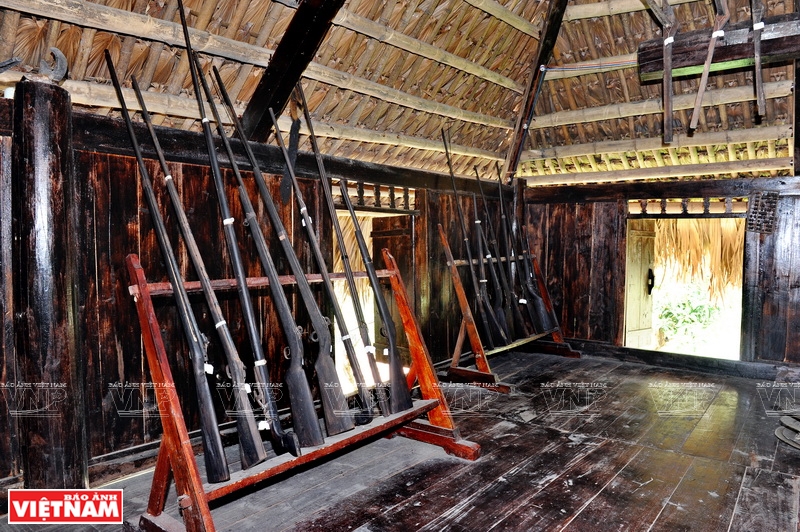
Old rifles are hung in the main part of the house.
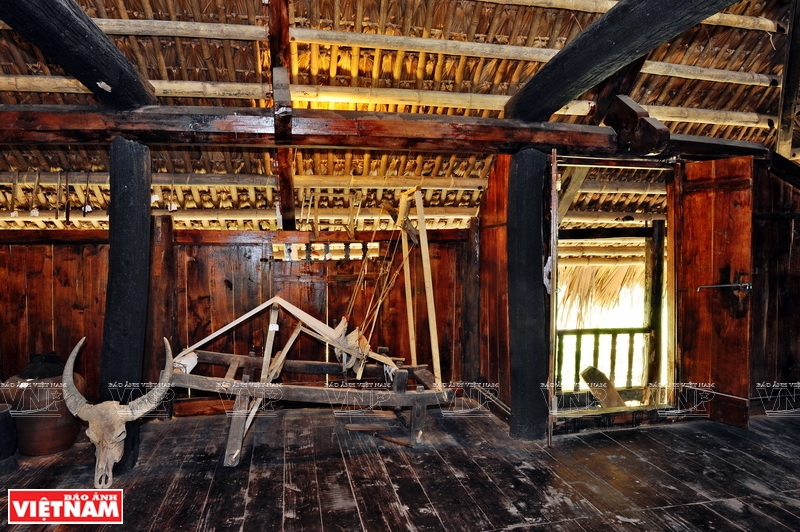
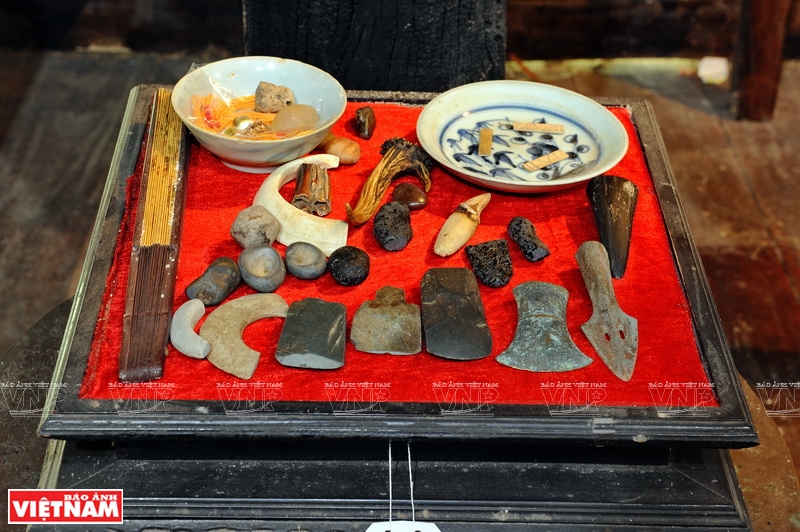
Objects used for officiating.

Lich doi, an original calendar of the ancient Muong made of bamboo.
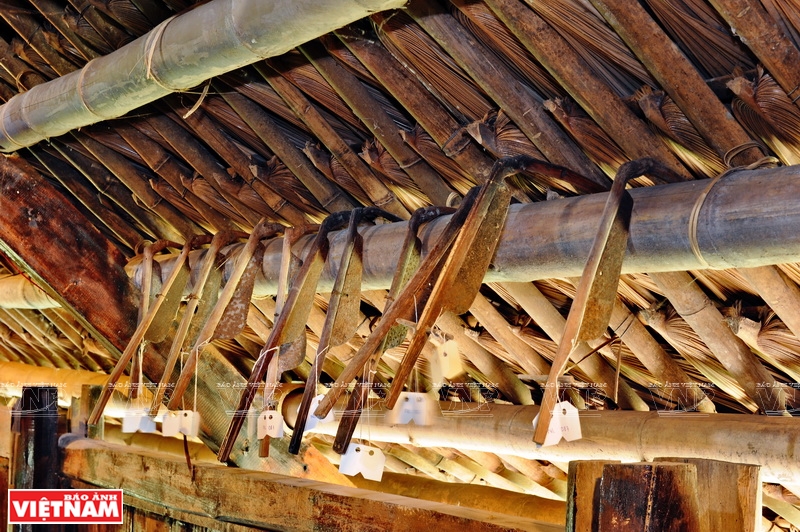
Farming tools of the ancient Muong. |
Nha Lang is always built in a higher area to show the authority of the
Lang Cun over his
muong.
Nha Lang has seven parts, the biggest of which is the main part located in the middle of the house. The main part of
Nha Lang is where the
Lang Cun and his servants (
au) discuss and decide on the affairs of the
muong. In the main part there are displayed the
muong’s bronze drum, gong, rifles, arrows and rhino, buffalo and cow horns, which represent the wealth and supreme power of the
Lang Cun.
A
Nha Lang has two wood-burning stoves placed in the first and the last part of the house. The first stove warms guests while the other is for cooking. Other people in the
muong are supposed to have only one stove in their homes.

National Assembly Vice Chairwoman Tong Thi Phong visits a Nha Lang in the Muong cultural space museum in Hoa Binh.
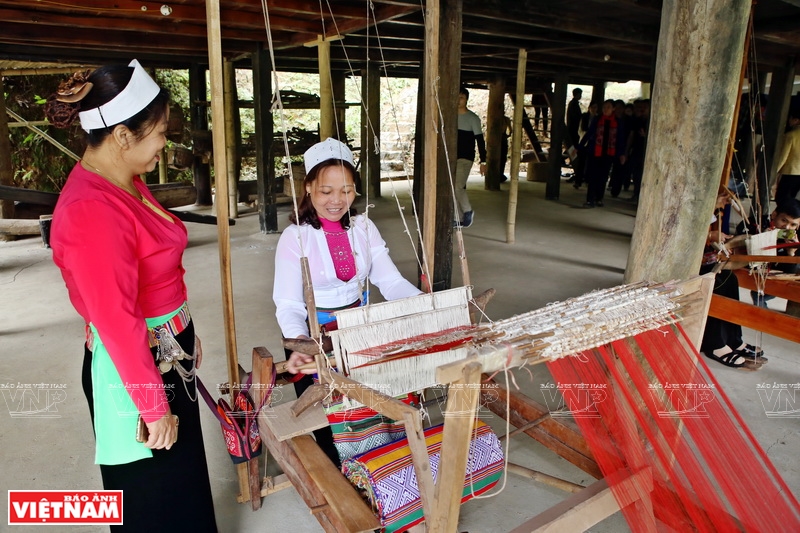
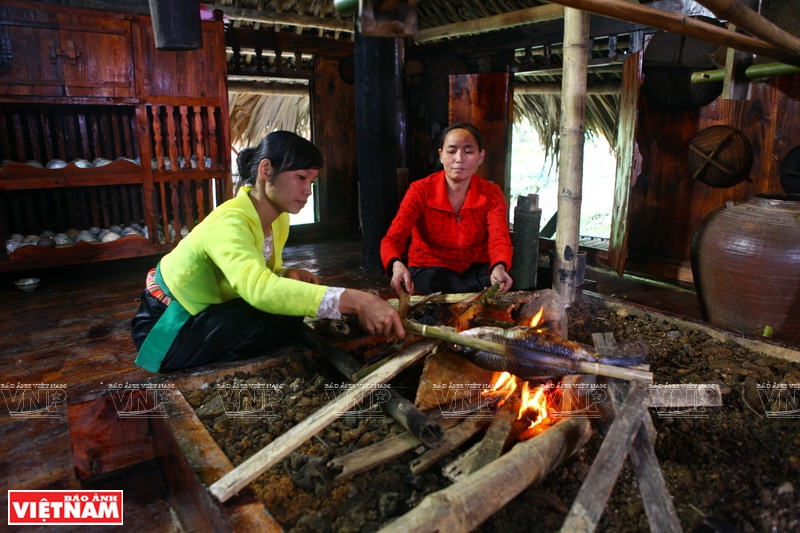
The restoration of Nha Lang preserves a cultural trait of the Muong while serving as an interesting tourist site.
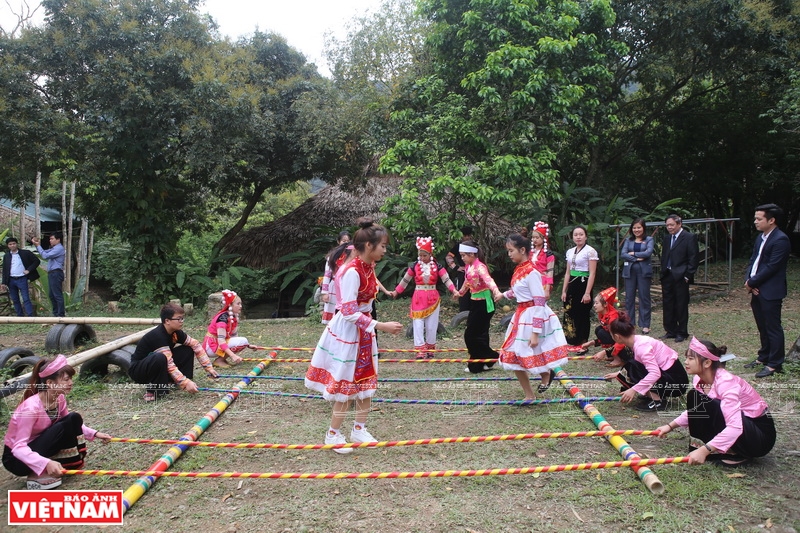
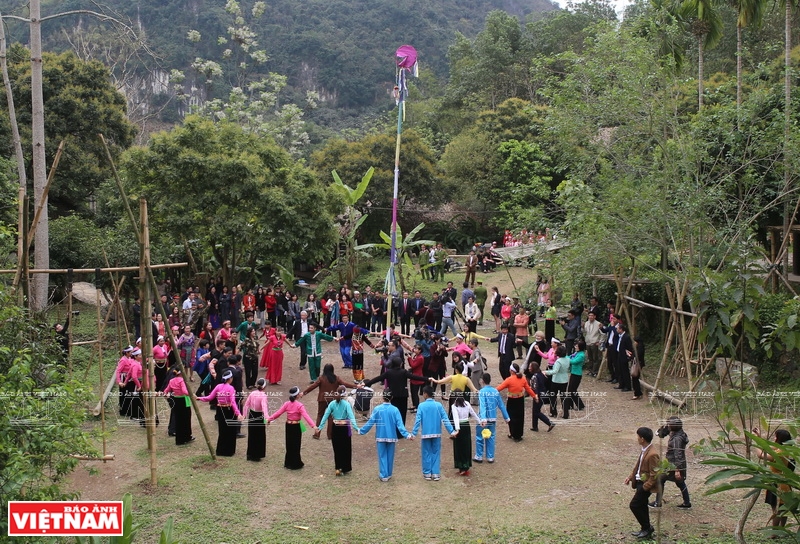
Visitors play folk games of the Muong in Nha Lang area. |
To preserve the cultural and architectural values of
Nha Lang, Hoa Binh province where the largest population of the
Muong live has recently restored
Nha Langs in the Muong cultural space museum and some localities in the province.
|
Lang (landlord) includes Lang Cun who governs a muong and Lang Dao, who are members of a Lang family and oversee villages in the muong. The post of Lang Cun is passed from one generation to another in the Lang family. |